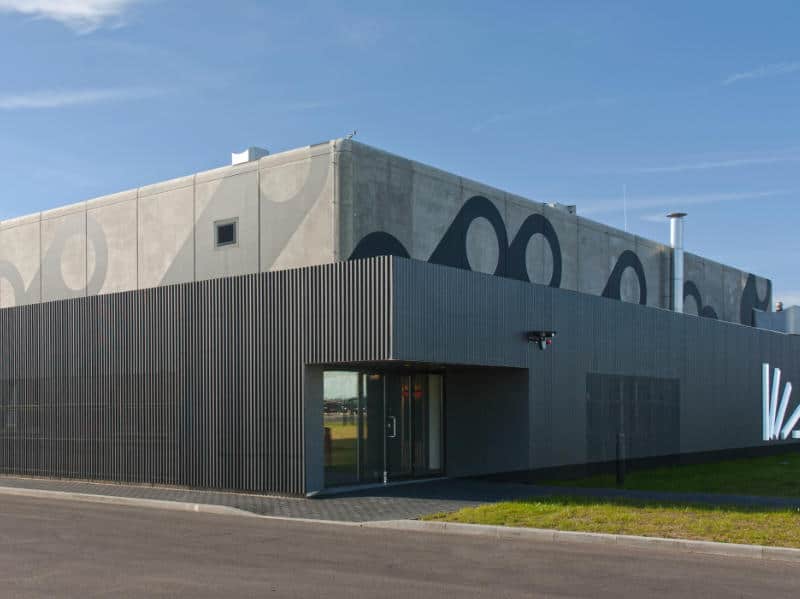If you are in the market for a new warehouse, it is important to take your time and consider all of your options. There are many factors to think about when making this decision, and if you don’t take them into account, you could end up with a warehouse facility that doesn’t suit your needs.
In this blog post, we will discuss 17 critical things to consider when selecting a location for your warehouse. By considering these factors, you can be sure to find the perfect location for a warehouse for your business!
The location of your warehouse space is one of the most important factors in the success of your business. It can make or break how well you do with inventory management, sales, and customer service.

Layouts and Infrastructure
The warehouse should have a layout that is well planned, organized, and efficient. It should be able to accommodate the future growth requirements of an organization and have sufficient space for storage and shipping.
In addition to having a good layout plan and infrastructure, there must be no roadblocks or hindrances in accessing the warehouse. For example, if there are many traffic jams or heavy traffic in your area then this can cause problems when transporting goods from one place to another.
Lastly, you need to consider whether there are any restrictions on what kind of goods can be stored in the warehouse. Some warehouses cannot store certain types of goods due to government regulations or local environmental factors.
The customer base
If you are in the business of selling a product, then it is important to look at the local demographics of your potential customers. This includes age and gender, but also location. If you’re going to be selling something that requires special shipping instructions, then you need to make sure that your warehouse location planning is close enough to where those customers live and work.
Demographics and Competition
The demographics of a location are important because they can tell you about the competition and how much you can charge for your product. For example, if there is a lot of competition in an area, then you might want to consider opening up somewhere else that has less competition. If there are not many people in an area, then it is likely that they will not be able to afford your products or services.
You should also consider looking at the demographic data on a city or county level, rather than just on a state level. This will give you a better idea of what areas have good demographics and where there may be some problems with getting business done in those areas.
The competition in an area is also important because it tells you how much demand there is for your goods or services in that particular area. If there are many other warehouses in your desired area, then there may not be enough demand for all of them, which means that there will be fewer customers than if there were fewer competing warehouses in the same location.
Suppliers Locations
This can have a significant impact on how much time and money you spend on transportation.
If you have one supplier, then it’s better to locate your warehouse near where they are located. This will help reduce transportation costs because you won’t need to travel as far.
Access to transportation
It’s not uncommon for warehouses to be located near airports and ports. Transportation companies like FedEx and UPS have made it a priority to have warehouses near their depots so they can deliver products quickly and efficiently.
In the same way that you want your goods to reach customers quickly, you also want them to leave your warehouse as soon as possible. Having a right location that is close to transportation options makes it easier for you to receive inventory and ship out products.
Ports Airports Railway Stations Proximity
If you are planning to start your own e-commerce business, you will need an effective warehouse to store all your inventory. The ideal place for this may seem like a no-brainer, but there are many factors to consider before making a final decision.
Here are some of the most important factors:
Proximity to ports and airports
This is one of the most crucial factors that you should consider when choosing a location for your warehouse. If you are planning to sell products overseas, then it would be wise if you choose a place that is close to ports and airports so that you can easily ship out your products across the world. This way, not only will shipping be cheaper but also faster!
Proximity to railways
You should also look closely at railway stations because they can help with quicker deliveries as well as reduce transportation costs significantly.
Proximity to highways
Highways will also make transporting goods easier and faster than usual, especially if they’re already connected with major roads in other areas which means more traffic flow and more customers.
Highways & Traffic Flow
If you are going to be shipping your products across the country on a regular basis, you need to make sure that your facility is in an area where there is easy access to major highways. If you are located in an area where there is no direct access to a highway, it will take longer for your trucks to get out on the road and deliver their goods. This could mean that your customers will not receive their products as quickly as they would like, which could lead to lost sales.
The other factor that you should consider when choosing a location for your warehouse is traffic flow. Traffic flow refers not only to how busy the roadways are but also how many other warehousing facility are located nearby.
So, you need to be wary of the peak traffic hours, they are generally between 7 a.m. and 10 a.m., with a secondary peak between 4 p.m. and 6 p.m. The level of congestion is measured using the Traffic Index.
The average Traffic Index for a given country or city can vary widely depending on its geography, climate, and density of population, as well as the level of development and infrastructure investment in the area.
Building Availability and Expansion
If you find a location that doesn’t have enough expansion room, then you need to find another property that does have room for growth. The same goes for finding a location where there are already other businesses operating near each other; this could lead to problems down the road when trying to expand into new markets and customers with different needs than those already being served by existing companies operating from nearby warehouses.
Leasing Rates
While it may be tempting to choose a location based on proximity to customers and ease of access, you also need to think about how much it will cost you to lease the space.
If you have a small business or are just starting out, it can be difficult to find enough capital to cover the expenses associated with starting up a business. Some businesses even run into trouble when they begin taking on too much debt and end up going bankrupt because they cannot afford to pay back their lenders.
With this in mind, you mustn’t look at leasing costs as an afterthought; instead, keep them firmly in mind when selecting a location for your warehouse.
Tax Structures and Incentives
Different states and localities offer different tax structures for businesses, so you need to be aware of the implications before signing a lease. For example, some states offer tax breaks or other incentives for businesses that create jobs, while others may have higher taxes on business income.
You should also consider whether the state or locality in which your warehouse is located offers any tax breaks or incentives for businesses. These can include breaks on property taxes, sales taxes, or income taxes. Additionally, some states offer income tax credits for businesses that invest in certain types of equipment or make use of certain types of technologies.
Restrictions on Environmental Conditions
You should also be aware of any restrictions that may be in place on the environmental conditions of the warehouse you are considering. For example, some areas may have very strict regulations regarding noise levels, air pollution, or water discharge.
These restrictions can limit the types of activities that you can carry out at your warehouse and may even require you to make changes to the way you operate your business.
Before signing a lease, be sure to do your research and understand all of the implications that come along with it. Failing to do so could lead to costly mistakes down the road.

Access to Workforce
Workforce availability is another important factor to consider when choosing a warehouse location. In some areas, the unemployment rate is high and there may not be enough skilled workers to fill all of the available positions.
This could lead to problems down the road, as you may not be able to find enough employees to staff your warehouse. Additionally, if the unemployment rate is high in an area, it may be difficult to find workers who are qualified and have the necessary skills to work in a warehouse.
Availability and Costs of Utility Services
The availability and costs of utility services is another important factor to consider when choosing a warehouse location. In some areas, the cost of electricity or water may be higher than in others. Additionally, some areas may not have access to certain types of utilities, such as natural gas.
You should also consider the availability of other services, such as trash collection and sewer service. In some areas, these services may be included in the cost of your lease, while in others you may have to pay for them separately.
Proximity to Carriers
The proximity of your warehouse to carriers and suppliers is another important factor to consider. If your warehouse is located far away from these businesses, it may be difficult to get the raw materials you need on time. Additionally, if your supply chain are located far away, they may charge higher shipping costs.
Warehouse Storage Needs
The storage needs of your business are another important factor to consider when choosing a warehouse location. You need to make sure that the warehouse you choose is large enough to accommodate all of your inventory. Additionally, you need to ensure that the warehouse has enough space for future operations and growth.
If you are planning on expanding your business in the future, you should choose a location that will allow you to do so.
Strategic Warehouse Location
The strategic location of your warehouse is another important factor to consider. You need to make sure that the warehouse is located in an area that is convenient for your customers and employees. Additionally, you need to ensure that the warehouse is located in an area that is accessible by all major transportation routes.
Planning for the Future
When choosing a warehouse location, you also need to consider the future needs of your business. You should choose a location that will allow you to expand your business in the future.
Now that you know what to look for in a warehouse location, start searching for properties that fit your needs. With effort and research, you should be able to find the perfect location for your business.
The Bottom Line
Selecting the right warehouse location is essential to the success of your business. By considering the 17 factors we’ve outlined, you can be sure that you are making the best decision for your company and its future growth.
Have questions or need help determining which of these factors are most important for your specific needs? Schedule a free consultation and let me assist you in finding the perfect warehouse space for your business.




